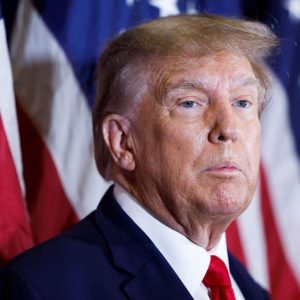Introduction:
In contemporary global politics, a discernible resurgence of conservatism is reshaping the political landscape. From the United States to Brazil, and Hungary to India, conservative voices are gaining prominence, prompting a critical examination of the underlying forces fueling this ideological shift. This blog seeks to unravel the multifaceted causes behind the rise of conservatism, emphasizing the complexity and diversity within the movement.

Economic Discontent and the Quest for Certainty:
Amidst the complexities of globalization, economic uncertainties have become a driving force behind the conservative surge. The uneven benefits of global interconnectedness, coupled with stagnant wages and rising inequality, have left many feeling disenfranchised. Traditional institutions, perceived as failing to address these concerns, have led to disillusionment with the status quo. Conservatives, with their emphasis on individual responsibility, smaller government, and traditional values, tap into this frustration, offering a clear vision for change and a promise of economic stability.
Cultural Backlash and Identity Politics:
A pivotal factor contributing to conservatism’s ascent is the cultural backlash in the face of rapid societal changes. As traditional values and norms face challenges from globalization, immigration, and social rights advancements, a sense of cultural displacement emerges. Conservatives adeptly capitalize on this anxiety, advocating for a return to established social structures and moral codes. Issues such as abortion, immigration, and gun control become rallying points, uniting diverse groups under the banner of preserving cultural identity.
Technological Skepticism and Media Evolution:
The relentless pace of technological change has induced fear and uncertainty among segments of the population. Conservatives leverage skepticism towards unchecked technological advancement, resonating with those who prefer a more measured pace of change and prioritize human connection over digital immersion. The evolution of the media landscape further amplifies conservative narratives, as online platforms and social media provide alternative avenues to reach and mobilize their base, creating echo chambers that reinforce existing ideologies.
Populist Rhetoric and Strongman Leadership:

The rise of charismatic leaders employing populist rhetoric is a defining feature of the conservative resurgence. Figures like Donald Trump, Narendra Modi, and Jair Bolsonaro present themselves as outsiders challenging the political establishment. They tap into frustrations with perceived elitism, promising to give power back to the people. This strongman leadership style resonates with voters seeking decisive action and a departure from traditional political norms.
Reaction to Liberal Policies:
Conservatism’s resurgence is, in part, a reaction to perceived overreaches by liberal governments. Concerns about excessive government spending, expansive social programs, and the erosion of individual freedoms drive a desire for more conservative governance. The election of leaders like Stephen Harper in Canada reflects a shift towards fiscal responsibility and a focus on national security in response to perceived liberal excesses.
Political Savvy and Strategic Messaging:
The rise of the right wouldn’t be complete without acknowledging the skillful political maneuvering of conservative parties and leaders. They have mastered the art of identifying and exploiting existing societal anxieties, crafting clear and concise messages that resonate with their target audience. They have effectively utilized social media and new communication channels to bypass traditional gatekeepers and connect directly with their base. This, coupled with their ability to frame their opponents as out-of-touch elites or threats to national security, has allowed them to mobilize their base and win elections.
However, the narrative of a triumphant rightward march is not without its nuances and challenges. The rise of populism and nationalism, often associated with conservative movements, has led to a rise in political polarization and social divisions. The emphasis on “traditional values” can often be exclusionary and discriminatory, leading to concerns about the erosion of minority rights and freedoms. Additionally, the economic policies often advocated by conservatives, such as tax cuts for the wealthy and deregulation, can exacerbate existing inequalities and leave vulnerable populations behind.
The Decline of Traditional Gatekeepers:
The decline of traditional gatekeepers in media and politics has created a vacuum that right-wing movements have been quick to fill. Mainstream media outlets are often seen as biased against conservative viewpoints, leading some to seek alternative sources of information online and on social media. This has facilitated the spread of misinformation and disinformation, further solidifying existing biases and making it harder to engage in constructive dialogue across the political spectrum.
The Resurgence of Right: Why Conservatives are Ascending the Global Scale
Across the globe, a familiar rumble is echoing through political landscapes – the rising tide of conservatism. From Bolsonaro’s Brazil to Orbán’s Hungary, leaders espousing traditional values and limited government influence are captivating electorates and consolidating power. But what factors are fueling this trend, and what does it portend for the future of the political landscape?
Examples in Action:
The United States: The Republican Party, under Donald Trump, tapped into anxieties about globalization, immigration, and cultural change, winning support from white working-class voters who felt left behind by economic and social shifts.
Hungary: Viktor Orbán’s Fidesz party has consolidated power by appealing to nationalist sentiment, promoting traditional Christian values, and cracking down on immigration.
Brazil: Jair Bolsonaro’s victory in the 2018 presidential election was fueled by anti-establishment sentiment, frustration with corruption, and anxieties about crime and social change.
India: Narendra Modi’s Bharatiya Janata Party has benefited from a Hindu nationalist wave, promising to restore India’s cultural identity and economic strength.
Conclusion:
The rise of conservatives and their ascent to power is a complex phenomenon shaped by a combination of economic, social, and political factors. The appeal of conservative ideologies, the strategic use of nationalism and identity politics, a commitment to social conservatism, populist rhetoric, and reactions to perceived liberal excesses have all played significant roles.
Understanding the nuances of the conservative resurgence requires a holistic examination of these factors and their interplay within specific national contexts. As the political landscape continues to evolve, it is crucial to closely observe how conservative movements adapt to new challenges and opportunities, shaping the future trajectory of political power.
